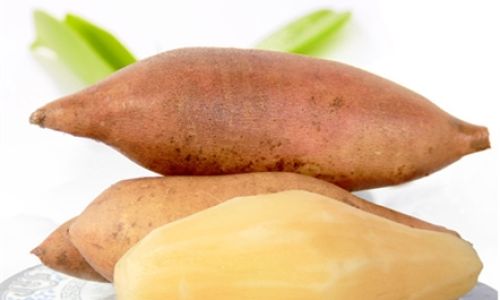Introduction
In the realm of culinary arts and nutrition, the utilization of various ingredients often necessitates careful handling to preserve their freshness, taste, and nutritional value. Among the myriad of ingredients used worldwide, Tremella fuciformis, commonly known as white jelly fungus or silver ear mushroom, holds a unique place due to its myriad health benefits and culinary versatility. This gelatinous fungus, native to China, has been a staple in traditional medicine and cuisine for centuries, praised for its ability to nourish the lungs, moisturize the skin, and enhance overall health. However, one question frequently arises among those who incorporate this ingredient into their diets: once soaked, can Tremella fuciformis be stored in the refrigerator for later use while maintaining its freshness?

Understanding Tremella Fuciformis
Before delving into the storage question, it is crucial to understand the basic characteristics of Tremella fuciformis. This edible fungus is characterized by its translucent, jelly-like appearance and its ability to absorb and retain a significant amount of water. When dried, it can be stored for extended periods without losing much of its nutritional content or flavor. However, once soaked in water, it undergoes a transformation, expanding to several times its original size and becoming soft and pliable, ready for cooking or incorporation into various dishes.
The nutritional profile of Tremella fuciformis is impressive, boasting high levels of polysaccharides, dietary fiber, vitamins, and minerals. These components contribute to its ability to support immune function, improve skin health, and aid in digestion. Given its nutritional density and the effort required to prepare it properly, ensuring that soaked Tremella fuciformis retains its quality is of utmost importance.
The Soaking Process
The soaking process is essential for rehydrating Tremella fuciformis and making it suitable for cooking. Typically, dried Tremella fuciformis is soaked in cold or lukewarm water for several hours or overnight, depending on its size and the desired texture. During this time, the fungus absorbs water, becoming soft and ready for use in soups, desserts, or other culinary preparations.
It is important to note that the soaking water should be changed at least once during the process to remove any impurities or dirt that may have adhered to the dried fungus. Additionally, soaking in excessively hot water should be avoided as it can compromise the texture and nutritional value of Tremella fuciformis.
The Refrigeration Question

Now, let us address the central question: can soaked Tremella fuciformis be stored in the refrigerator for freshness? The answer is yes, with certain conditions and precautions. Once soaked, Tremella fuciformis can indeed be refrigerated to extend its shelf life and maintain its quality. However, there are a few key points to consider to ensure optimal preservation.
-
Prompt Refrigeration: Once soaked, Tremella fuciformis should be refrigerated as soon as possible. Exposure to warm temperatures for extended periods can lead to bacterial growth and spoilage. Therefore, it is advisable to soak the fungus just before you plan to use it or immediately transfer it to the refrigerator after soaking.
-
Proper Storage Container: Using an airtight container or a sealed plastic bag is crucial to prevent contamination and moisture loss. This not only helps maintain the freshness of the soaked Tremella fuciformis but also prevents it from absorbing odors from other foods in the refrigerator.
-
Storage Duration: While refrigeration can extend the shelf life of soaked Tremella fuciformis, it is not a permanent solution. Ideally, soaked Tremella fuciformis should be used within one to two days for the best texture and flavor. Prolonged storage, even in the refrigerator, can lead to a decline in quality, with the fungus becoming mushy or losing its characteristic jelly-like texture.
-
Re-Soaking and Usage: If you find that the soaked Tremella fuciformis has been in the refrigerator for longer than recommended and its texture or appearance has changed, it is best to discard it. Attempting to re-soak or cook it may not restore its original quality, and consuming spoiled Tremella fuciformis can pose health risks.
Alternative Storage Methods
While refrigeration is a viable option for short-term storage, there are alternative methods that can be considered for those who wish to preserve Tremella fuciformis for longer periods.

-
Freezing: For longer-term storage, freezing soaked Tremella fuciformis is an effective option. After soaking, drain the excess water, pat the fungus dry with paper towels, and place it in an airtight container or freezer bag. Label the container with the date and use within three to six months for the best quality. When ready to use, thaw the Tremella fuciformis in the refrigerator overnight or under cold running water.
-
Drying: Another method, albeit less practical for immediate use, is to dry the soaked Tremella fuciformis again. This can be done using a food dehydrator or by placing it in a single layer on a baking sheet and letting it air-dry in a well-ventilated area. Once fully dried, it can be stored in an airtight container in a cool, dark place for several months. However, note that re-dried Tremella fuciformis may not have the same texture or moisture content as freshly dried ones.
Conclusion
In conclusion, soaked Tremella fuciformis can indeed be stored in the refrigerator for freshness, provided that certain conditions and precautions are met. Prompt refrigeration in an airtight container, along with mindful attention to storage duration, can help maintain the quality and nutritional value of this valuable ingredient. For those seeking longer-term preservation, freezing or re-drying are viable alternatives, each with its own set of considerations and potential impact on texture and flavor.
Ultimately, the decision on how to store soaked Tremella fuciformis should be based on individual needs, the intended use of the ingredient, and the available storage options. By understanding these factors and acting accordingly, one can ensure that Tremella fuciformis remains a nutritious and delicious addition to their culinary repertoire, providing both culinary enjoyment and health benefits.






0 comments